 Andy Scott, the 2012 South Florida PGA Teacher of the Year, is the PGA director of instruction at the Andy Scott School of Golf at Kelly Greens Golf and Country Club in Fort Myers, Florida.
Andy Scott, the 2012 South Florida PGA Teacher of the Year, is the PGA director of instruction at the Andy Scott School of Golf at Kelly Greens Golf and Country Club in Fort Myers, Florida.
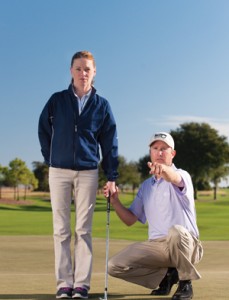
Something I’ve noticed while teaching is how much trouble some students have getting their grip to match up with their clubface so the club is square at address and impact. Some players will place their hands on the club with a proper grip, but the face of the club will be unknowingly open or shut at address – causing slices or hooks from a poor setup, and from the impact position on the clubface. I teach my students a couple of checkpoints they can use to make sure their grip matches up to a square position at address in a repeatable way.
A pair of checkpoints
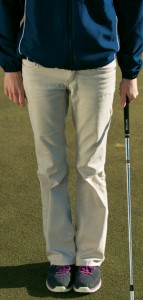
What I teach my students to do is to make sure that the clubface is square at two separate checkpoints before each shot. First, I have them start by putting the club in their lead hand – the left hand, for right-handed players – while the sole of the club rests on the ground. With this checkpoint, they can visually check that the clubface is square and perpendicular to their body, and that the clubface is pointing at the target line. The second checkpoint involves players placing their other hand on the club and raising it to waist height. As the arms stretch away from the body, that simulates the position the hands will be in at impact. Sometimes the club will be square at the first checkpoint, but rotate one way or the other as the arms stretch out. If that happens, I teach the players to make sure their grip is in their fingers and not in the palm of their hands. If the grip is good, the clubface should be square, at both checkpoints, using the grooves on the clubface as a reference point.
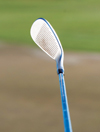
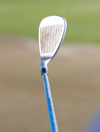
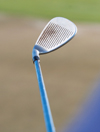 Raising the club to waist height can determine whether the clubface is closed, open or square.
Raising the club to waist height can determine whether the clubface is closed, open or square.
Getting a grip on squaring the clubface
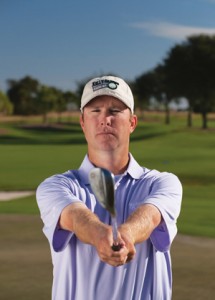
Baseball, hockey, lacrosse, tennis – most other sports have grips where the stick is in the palm of players’ hands. Golf requires players to grip the club with the fingers, which feels very unnatural to many people. Teaching the grip can be tricky, and I find that working on keeping the clubface square is a sneaky way to get students to focus on the grip. I see results with students within 10-15 shots of teaching them my two checkpoints. For the player who usually slices the ball, I’ll warn them that they’re going to hit some pulls and hooks the first few swings. They usually doubt me; then they’re delighted to see the ball actually go left instead of right. Then I can start working on getting them to swing out at the target a bit more, and that gets them hitting straighter, longer shots – and that’s always good for business.


